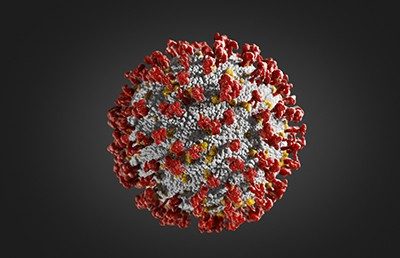FOR IMMEDIATE RELEASE | September 21, 2022
SARS-CoV-2 mimics could accelerate vaccine research, make it safer
“Virus-Like Particles of SARS-CoV‑2 as Virus Surrogates: Morphology, Immunogenicity, and Internalization in Neuronal Cells”
ACS Infectious Diseases
Though well-known as a respiratory illness, COVID-19 can also affect the nervous system, bringing on headaches and fatigue and wiping out the sense of smell. But it’s unclear whether these symptoms are caused by an immune response or the virus itself invading the central nervous system (CNS). Now, researchers reporting in ACS Infectious Diseases have developed a new tool and possible vaccine candidate that could help scientists understand how SARS-CoV-2 could be invading these cells.
Over the past two years, researchers have been trying to get a better understanding of the virus and developing vaccines against it. To date, the U.S. Food and Drug Administration (FDA) has approved four COVID-19 vaccines. They offer a great deal of protection against the virus, but some people who have received the shots still catch COVID-19. To develop even better vaccines and treatments, many scientists must conduct experiments with the real virus, which can only be handled in very specialized laboratories. Working with live viruses can put personnel at risk, and the requirement for specially designed settings can limit the scope of research that some teams can perform.
Instead, a safer and easier strategy is to use virus-like particles (VLPs), which are molecular mimics that look and act like a certain virus without being infectious. The particles can even serve as a vaccine themselves, as is the case with two that are currently available against the human papillomavirus. Researchers have developed VLPs of SARS-CoV-2 previously but have yet to specifically study how they affect the CNS. So, Manidipa Banerjee and colleagues wanted to create SARS-CoV-2 VLPs and run them through tests to see whether they function like the real deal and could be used one day as vaccines.
The researchers made VLPs with the four major structural proteins of SARS-CoV-2 — the spike, membrane, envelope and nucleocapsid — and allowed them to self-assemble into small, spherical particles. The particles looked similar to SARS-CoV-2 and could bind ACE2, which the virus latches onto to enter human cells. In other experiments, the team showed that the VLPs could get into brain cells in petri dishes, and the process depended on both cholesterol and an enzyme called dynamin. In addition, the VLPs tricked the immune system into launching a counterattack in mice, just as it does against SARS-CoV-2. The researchers say that VLPs could, therefore, be used in future vaccine development research and to get a better handle on what makes this new virus tick.
The authors do not acknowledge a funding source for this study.
To automatically receive press releases from the American Chemical Society, contact newsroom@acs.org.
Note: ACS does not conduct research, but publishes and publicizes peer-reviewed scientific studies.
Media Contact
ACS Newsroom
newsroom@acs.org


